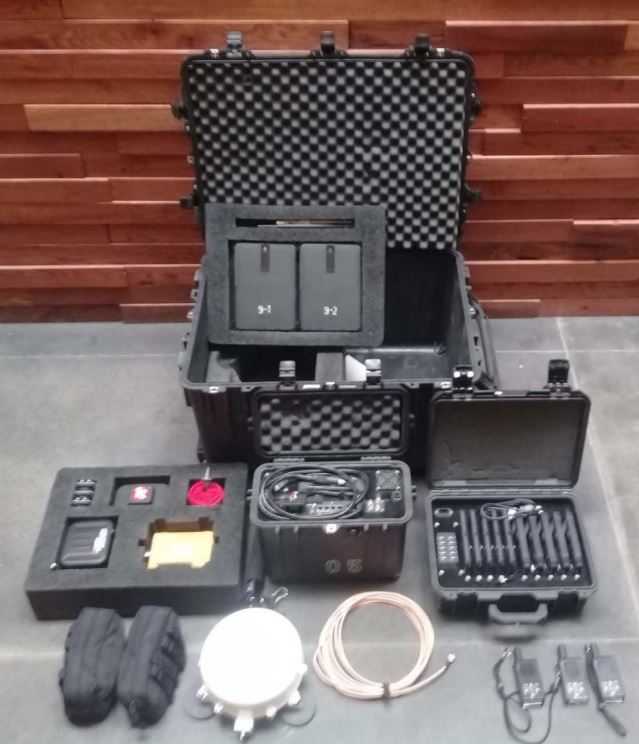 |
Main Menu
Home
History
Handbooks
Publications
Papers
Videos
Interpreters
Site Map
Remote Advise Assist
(RAA)
Home > Topics > RAA
Political, military, safety, and health (Covid) considerations have led special operations forces units to adapt how they conduct Train, Advise, and Assist (TAA) missions. It is not uncommon to see these TAA missions conducted from afar - using various communications and situational awareness tools to conduct the advisory effort.
Afghanistan - Levels of Advising. As the U.S. mission in Afghanistan was scaled back and the advisory force structure was reduced the methods of advising had to be modified. With the downsizing, the Resolute Force (RS) mission adopted a new advisory effort construct - creating three levels of advising. Level One was constant day-to-day presence, Level Two was a reduced presence - perhaps once or twice a week, and Level 3 was advising - usually from a remote location.
Afghanistan - EAPs. Advisory teams that used to be co-located with their Afghan counterparts were eventually separated physical - in different locations, sometimes many miles apart. Advisor teams would conduct periodic visits called Expeditionary Advisory Package (EAP) to the Afghan unit location - and maintain communications with the Afghan counterparts through cell phone, email, and online videos when apart.
Iraq Advisory Effort. SOF operators who depoyed to Iraq in June 2014 were limited by United States national policy from accompanying Iraqi partners into combat to fight the Islamic State. This new concept was called Remote, Advise, and Assist Operations (RAA). The advisors (SOF and conventional) would co-locate with Iraqi counterparts in tactical operations centers safe from the areas of combat to conduct their advisor duties. This practice was refined during the counteroffensive to take Mosul back from the Islamic State. Aiding in this RAA effort was the use of Virtual Accompany Kits (VAKs) to communicate with the Iraqi units in the fight.
Covid. The onset of Covid a few years later provided another justification for utilizing RAA operations. Advisors across the services began the practice of remote advising to overcome the restrictions of other nations as well as the health concerns due to the Covid outbreak around the world.
Ukraine. After the 2014 attack on Ukraine by Russia that resulted in the loss of Crimea and parts of eastern Ukraine the U.S. stepped up its advisory effort with Ukraine. SOF and conventional advisors were deployed to Ukraine to assist in the training of the Ukrainian military. Special Operations Command Europe (SOCEUR) put into practice the Resistance Operating Concept (ROC).
Russian Invasion. With the Russian all-out invasion of Ukraine in February 2022, SOF operators and other advisors were withdrawn from Ukraine. However, they continued their Train, Advise, and Assist mission from afar - using the Remote, Advise, and Assist methodology.
References
Brief on Remoted Advise Assist (RAA) and Host Nation
Tracking (HNT)
USSOCOM Program Manager SOCOM PEO
https://militaryadvisor.info/docs/brief-raa-hnt-socom-peo-SRSE.pdf

RAA Kit - SOCOM (larger image)
RAA Equipment
Remote Advise Assist Virtual Accompany Kit (RAA/VAK)
GOVTRIBE - Solicitation (Feb 2021)
"Full Spectrum - Remote Advise and Assist - Virtual
Accompany Kit", Irregular Warfare Technical Support Directorate
(IWTSD).
https://cttso.gov/Projects/I2C/Remote_Advise_Assist.html
News Articles
March 2, 2021, "Partnered MDMP: Achieving Shared Objectives Through Remote Advise and Assist Operations", Eunomia Journal, by Alan Goodman.
December 8, 2020, "Global Special Operations: Advising and Mentoring in the Zoom Era", Clearance Jobs, by Jason Criss Howk, Alan Van Saun, and Mike Mailloux.
May 20, 2020, "The U.S. Military Should Turn to Remote-Enabled Advising", War on the Rocks, by Gordon Richmond.
|
MessagingSignal
|